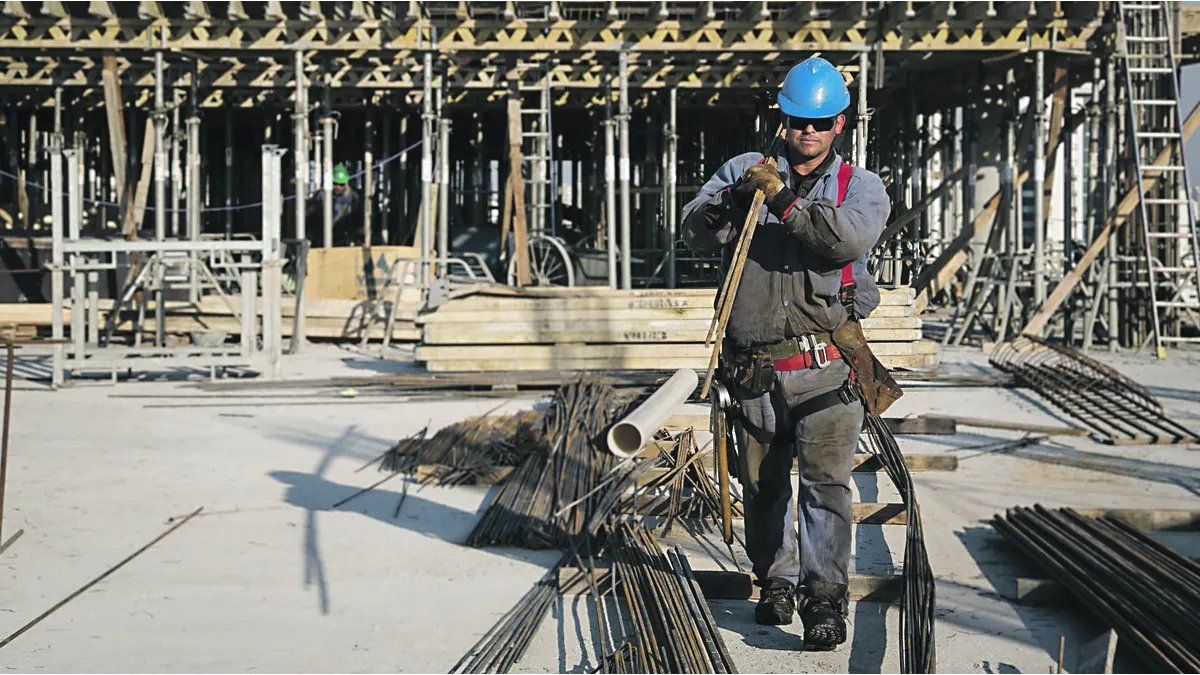Due to the uncertainty prior to the presidential electionhe consumption grew in October. A trend that was seen in different goods and sectorsamong which construction materials stand out. This was reflected in a sector report, in which a strong rebound in demand was observed in the monthly comparison.
He Index Build record an increase of 14.9% compared to September in the monthly seasonally adjusted measurement and It was 1.9%, above October 2022. In this way, the cumulative figure for the first ten months of this year closed 7.4% below the same period of the previous year.
“Once again, construction materials were a refuge from economic uncertainty and the October election results.“, they pointed out from Construya, whose index measures the evolution of the volumes sold to the private sector of the construction products manufactured by the companies that comprise it, among which bricks, ceramics, Portland cement, lime, long steel, carpentry stand out. aluminum, adhesives and pastes, waterproofing paints, toilets, boilers and home systems, among others.
That is to say that, as happened for example with the sales of durable goodsmany consumers decided advance purchases in the run-up to the elections as a “hedge” facing a possible price jump after the presidential elections.
“It is the interpretation we give to the October numbers. This is not new. When people run out of investment alternatives to put their surpluses, they pour it into goods and, in this case, construction materials.“, he explained to Ambit Pedro Brandi, president of the Construya Group.
“In October, it seems to us that two things happened: people had additional money, with a high free dollar, around $1,000. Soa lot went into purchasing goods. That is why the Index rebounded strongly. It is because of these factors: speculative movements of the merchant, who wants to buy merchandise, and of the final consumer to whom the same thing happens”Brandi highlighted.
In this scenario, the president of Grupo Construya pointed out that “people are looking to get rid of the weight” and explained: “As for construction materials, there are two types: ‘perishable’ ones, like cement, which cannot be stocked for more than thirty days; and others that you can store for longer and even take up little space, such as iron and ceramics. When there is speculation, you realize that ‘stockable’ materials begin to move faster than the rest. In October all the materials were moved, but there was more movement of non-perishables.”
Another sectoral data that had accounted for the jump in consumption in October was the SME retail sales surveyed by CAMEthat they grew 4.7% compared to September. “Sales had a boost the week before the elections, when many people made early consumption decisions to avoid possible price increases,” the entity highlighted.
Particularly the category “hardware, electrical materials and construction materials“, presented an increase of 5.2% year-on-year and 8.5% monthly. “Despite the supply challenges, businesses found themselves with a sufficient level of stock because they accumulated inventories anticipating the uncertainty before the elections, similar to what happened in August. Credit card sales experienced a notable increase driven by promotions offered by businesses in search of liquidity. The inventory accumulation strategy and the use of cards contributed to maintaining the activity of the retail sector,” CAME highlighted.
Activity
He INDEC released this Tuesday the Indicator of the construction activitywhich in September presented a contraction of 4.5% year-on-year, while in the seasonally adjusted variation it fell 0.1% compared to August. In this way, in the first nine months of the year it accumulated a decrease of 2.9% compared to the same period in 2022.
In this context, the consulting firm LCG analyzed the data released by INDEC and projected: “During 2023, the construction sector showed erratic dynamics and we expect it to continue behaving in the same way. The political uncertainty that spills over into investment decisions could slow down project execution. However, the pronounced exchange gap contributes to lowering costs at the free exchange rate, which can function as a shock absorber of activity, thus generating an ambiguous effect that encourages this erratic behavior.
“For this, We hope that in the annual comparison Construction will reflect an improvement for the remainder of the year. The second half of last year was a bad half and leaves a low basis for comparison. Although we do not expect pronounced growth in the last months of the year, activity would go from averaging a fall of 2.9% annually in the first nine months, to a contraction of around 1.5% average in December,” concluded the signature.
Source: Ambito




